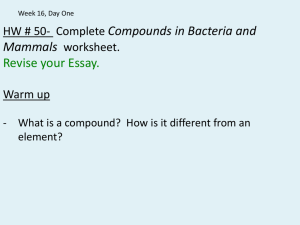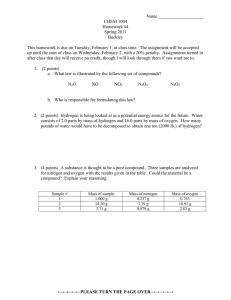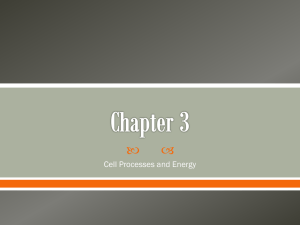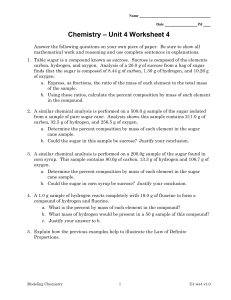Cell Processes and Energy
advertisement
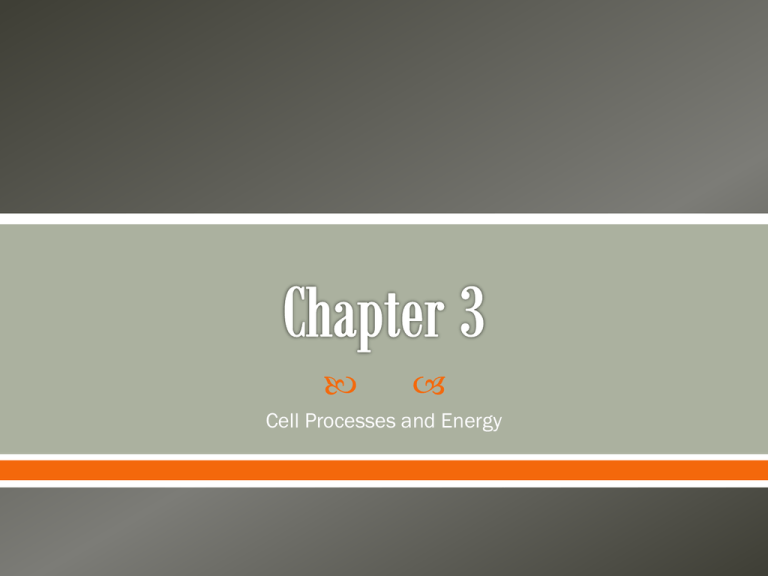
Cell Processes and Energy Pick up a note packet, chapter packet and warm up sheet I can… differentiate between compounds and elements. Warm up: What does the term ‘elementary’ mean? PASS THE JAR NOT YOURSELVES For each jar, use your observation skills to guess the substance. NO TASTING. Write the chemical name from the jar Guess the common name Record what it is composed of Determine if it is a compound or an element. Jar # 1 2 3 4 Chemical Name Common Name Vinegar (acetic acid) Sugar (sucrose) Aluminum Salt (sodium chloride) 5 Baking Soda(calcium carbonate) 6 Oxygen 7 8 9 Rubbing alcohol(isopropyl alcohol) Water (dihydrogen monoxide) Peroxide (dihydrogen dioxide Composed of… Compound (C) or Element (E)? Elements and Compounds o Elements • any substance that cannot be broken down into simpler substances • an ATOM is the smallest unit of an element • ex.) carbon, hydrogen, oxygen, nitrogen, phosphorous, sulfur o Compounds • two or more elements combine chemically • a MOLECULE is the smallest unit of a compound • ex.) carbon dioxide Water o compound or element? • H2O o makes up 2/3 of your body o most chemical reactions within cells could not take place without water “a cell without water” “a cell with water” Organic Compounds o contain carbon o ex.) methane, butane, acetone, propane Inorganic Compounds o don’t contain carbon o ex.) sodium chloride (table salt) and water Carbohydrates Proteins Lipids Nucleic Acids energy-rich organic compound made of the elements carbon, hydrogen, and oxygen Functions: store and provide energy and make up cellular parts Examples: potatoes, noodles, rice, bread energy-rich organic compound, cells store energy in lipids for later use made of the elements carbon, hydrogen, oxygen Functions: make up much of the structure of cells and speed up chemical reactions Examples: fats, oils, waxes What do a bird’s feathers, a spider’s web, and your fingernails have in common? PROTEINS made of the elements carbon, nitrogen, hydrogen, oxygen, and sometimes sulfur Functions: store energy, form parts of cell membrane and many cell’s molecules o enzymes: a type of protein that speeds up chemical reactions that are necessary for life in living things small molecules amino acids that make up proteins are long organic molecules that contain instructions what the cell needs to function made of the elements carbon, hydrogen, nitrogen, and phosphorous Functions: contain instructions that cells need to carry out all the functions of life 2 types of nucleic acids: o DNA (deoxyribonucleic acid)– carries information about an organism and is passed from parent to offspring o RNA (ribonucleic acid)– plays an important role in the production of proteins We learned about one type of mixture today o Solution, which is a chemical compound What are the three types of mixtures mentioned in the video? o COLLOID, SOLUTION, SUSPENSION o Explain each of them. o Extension: list some examples! Turn in warm up sheets!! Bin near locker.
